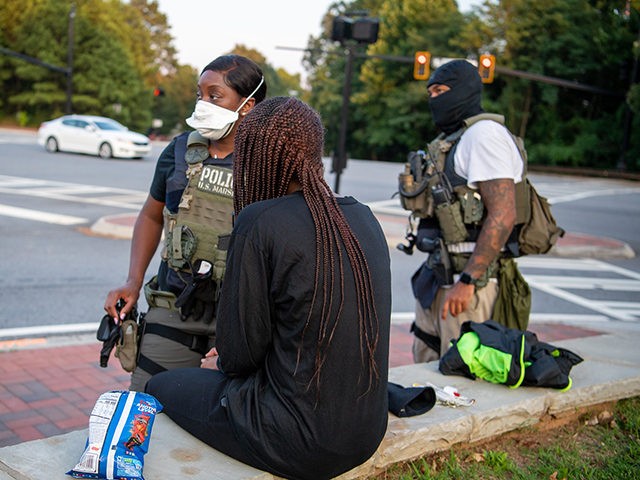Drug addicts, runaways, and illegal aliens are the three top targets of sex and forced labor traffickers, according to a new report by the Human Trafficking Institute (HTI).
The vast majority of prosecutions last year involved sex trafficking cases.
Of the 200 active civil human smuggling lawsuits last year, 91 involved sex trafficking and 109 forced labor.
“Although the Report does not include data on defendants’ country of origin, both U.S. citizens and foreign nationals were active defendants in human trafficking cases in 2020,” the assessment pointed out.
Over the last two decades, the report found that foreign nationals, primarily adult females from the Western Hemisphere, “were more likely” than other victims to be exploited in forced labor cases.
HTI reported:
[Fifty-three percent] of foreign national victims [over the last two decades ended] up in forced labor cases compared to 47% (384) in sex trafficking cases. Also contrary to general trends among victims regardless of nationality, 78% (588) of foreign national victims were adults compared to just 22% (165) that were children.
…
Finally, over the past 20 years, 55% (420) of foreign national victims in federal human trafficking cases came from the Western Hemisphere, 33% (248) from East Asia and the Pacific, 4% (33) from Europe and Eurasia, 4% (32) from South and Central Asia, 3% (26) from Africa, and less than 1% (3) from the Near East.
Only about a quarter (52) of foreign national victims in 2020 active cases entered the U.S. on a visa last year.
“Ninety-five percent (41) of these victims were trafficked into the United States, and 5% (2) were exploited after entry,” the report noted.
HTI acknowledged that its assessment only provides a snapshot of how human smugglers involved in forced labor and sex trafficking operate domestically. The watchdog only provides an exhaustive review of prosecutions (criminal and civil) in federal court, excluding state-level cases.
The report said:
In 2020, the top victim vulnerabilities in active cases were substance dependency (38%, 139), having run away from home (28%, 100), undocumented immigration status (17%, 63), homelessness (10%, 37), being in the foster care system (10%, 35), having been previously trafficked (8%, 28), limited English language skills (6%, 22), financial debt (4%, 15), intellectual disabilities (4%, 14), and prior incarceration (2%, 6).
The vast majority of the victims last year were women (92%), primarily girls (61%). Of the 8% male victims, the bulk were boys (6%).
HTI noted:
For girl victims, the top vulnerabilities were having run away from home (63%, 95) and being in the foster care system (23%, 34);41 for women, substance use dependency (59%, 109), and undocumented immigration status (23%, 43);42 and for men, undocumented immigration status (64%, 7) 6 and intellectual disabilities (36%, 4).
…
Overall, 53% (789) of victims in active human trafficking cases were children and 47% (709) were adults. Victims’ ages spanned five decades, with the oldest being 50 years old and the youngest being less than one year old. The average age of victims in both sex trafficking and forced labor cases was 16 years.
The victim vulnerabilities also differ by age, the report said, adding:
For child victims, running away from home was by far the most common vulnerability (63%, 100), followed by being in the foster care system (22%, 35), substance dependency (18%, 28), homelessness (9%, 14), and having been trafficked in the past (9%, 14). In comparison, the top vulnerabilities for adults were substance dependency (55%, 111), undocumented immigration status (25%, 51), homelessness (11%, 23), limited English language skills (9%, 18), and financial debt (7%, 15).
Most traffickers work independently of “trafficking rings” and rarely kidnap a stranger off the streets, the report said. Instead, traffickers carefully target their victims based on the vulnerabilities they can exploit in face-to-face exchanges.

COMMENTS
Please let us know if you're having issues with commenting.